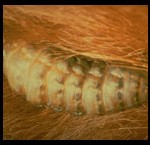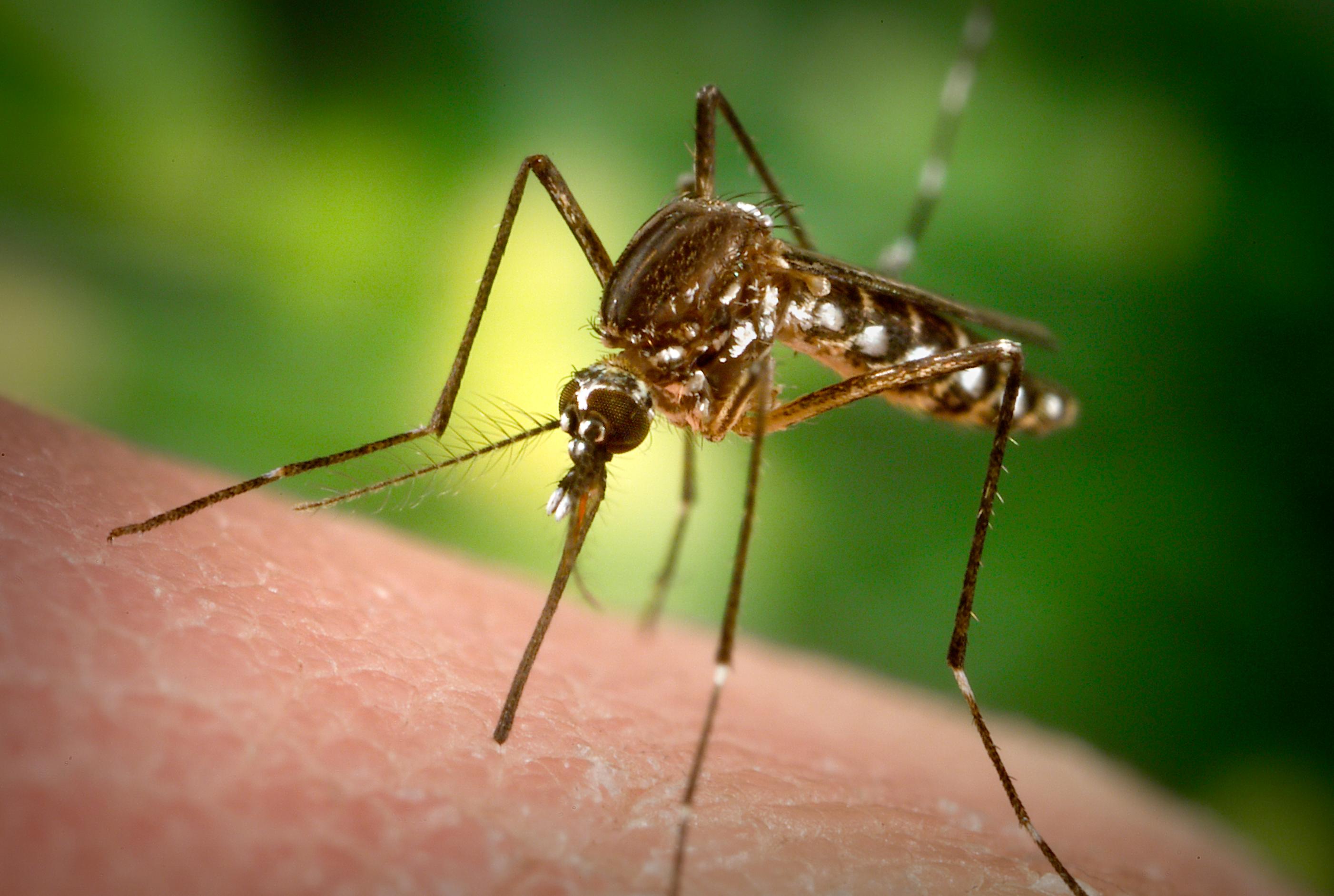Description:
In late spring to early summer, the female adult will glue eggs to the hairs of a host. The female typically chooses to place the eggs on the hind legs. Hypoderma bovis prefers active cattle while H. lineatum prefer to find standing or resting hosts.
The eggs will incubate for 3-7 days before the larvae emerge. The newly emerged tiny larvae crawl to the base of the hairs and penetrate through the host’s skin.
The larvae will migrate by burrowing through the connective tissue of the host for 4-6 months. During the winter the larvae will cluster together along the esophagus if it is H. lineatum or along the spinal column if it is H. bovis. When spring arrives the larvae move away from the cluster to the back of the animal at which point each larvae will cut a small hole for them to breathe out of. The larvae then remain along the back until they finish developing as a larva.
Upon completing larval development, the larva will back out of the hole and drop to the ground where they will pupate (transform into an adult fly).
Animals attacked:
Cattle
Veterinary Impact:
Significant loss to the cattle industry due to damaged hides, reduced weight gains, lowered weaning weights, tissue/meat damage and carcass downgrading at slaughter and self-injury by panicked cattle running to escape females laying eggs.
Cattle grubs can be fatal to the host if treated for larval infestations at the improper time. When treating for cattle grub infestations with a systemic product, it is unadvisable to treat when the larvae are clustered near the esophagus or the spinal column with a systemic product. The ensuing death of the larvae can lead to tissue inflammation that could cause the animal to suffocate or become paralyzed.
Control:
The injection of avermectin products will prevent or reduce the population of cattle grubs. It is crucial to read the label on the product before administering to an animal.





